tomorrow shaping
Knowledgeguardingexplorers our future

also inside
Universe without light
AI in the material world
Myanmar's young visionaries
Algae, typhoons and cybercrime
BRINGING DISCOVERY TO LIGHT 20 24


THE RESEARCH COMMUNICATION EXPERTS
Research shines here.
NANOROBOT BRAIN REPAIRS page 12

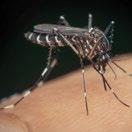
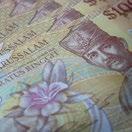







SUSTAINABLE CITIES:
SEEDS OF CHANGE FOR A GREENER FUTURE


 Tailor-made molecules page 08
AI unlocks chemistry page 41
An app for dengue page 09
Algae, typhoons and cybercrime page 42
Diversifying economies page 10
Giants in history page 46
Nano-jab cell responses page 18
Turning up the heat page 20
Giants in history page 40
Machine learning x-ray analysis page 38
Tailor-made molecules page 08
AI unlocks chemistry page 41
An app for dengue page 09
Algae, typhoons and cybercrime page 42
Diversifying economies page 10
Giants in history page 46
Nano-jab cell responses page 18
Turning up the heat page 20
Giants in history page 40
Machine learning x-ray analysis page 38

page 14
MYANMAR'S YOUNG VISIONARIES

Robotic experiments page 23

Shielding beyond vaccines page 48

Unveiling crystal structures page 28

Cracking the metal code page 49

page 39

A universe without light page 32

Generating 3D geometries page 50
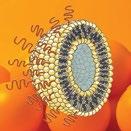
Vaccine bio-armour page 37

page 24

ILLUMINATING CRYSTALS
available in print. For more details of our distribution, please email: info@asiaresearchnews.com
Also


For
Get in touch
This year, we celebrate 20 years of communicating science in Asia. As I look back over the two decades, I am humbled and proud of what we have achieved. It has been quite an adventure that germinated from an idea to become Asia’s premier science communication company. We are immensely thankful to everyone who has supported and empowered us to grow to where we are today.
Reflecting on our journey, I note how we overcame challenges and expanded boundaries. For example, we went on a fully remote-work basis a whole decade before it became mainstream. This enabled us to work with the best people for our team regardless of their locations, harnessing expertise from Asia to Europe and North America. The result: we communicated more than 15,000 pieces of newsworthy research to a global readership in 190 countries.
The science communication landscape has evolved over the years. As more people are getting interested in communicating research, we decided to celebrate the anniversary by sharing some of what we’ve learnt over the years in our Science Communication Resources
I’ve also enjoyed getting to know a new generation of talented communicators, some of whom come to SciCom Coffee, a unique space we have been co-hosting for women elevating science communication in Asia.
We now look forward to the next stage in our journey, to continue championing Asia’s brilliance, building on established relationships and forging new ones, supporting science and research while navigating a fast-changing world.
Welcome to Asia Research News 2024, where you will read about scientists safeguarding our future with nanorobots, snow algae and sustainable living, how AI and materials interlink, inclusive and diversified economies, and how gravitational waves were once a laughing matter. Enjoy reading, and please get in touch afterwards. We’d love to hear from you.
 Founder and CEO
Magdeline
Founder and CEO
Magdeline
Pokar
2024 Showcase your research in our 2025 issue
more information
how
and
to submit: asiaresearchnews.com
Research featured in Asia Research News 2024 is based on information provided by the research institutions listed. Readers are advised to contact the researchers for additional information. All images used in whole or in part within this publication requiring a license or permission for usage are credited to their respective owners. ResearchSEA Limited and the Asia Research News team does not accept responsibility for any loss, damage or expenses incurred resulting from the use of information in this publication. ISSN 2042-0536 Copyright Asia Research News. We welcome you to reproduce articles in Asia Research News 2024, provided appropriate credit is given to Asia Research News and the research institutions featured. info@asiaresearchnews.com www.asiaresearchnews.com

Previously, the main problem was finding chemical reactions that can make the designed molecules with efficiencies and costs for real-world uses.
TAILOR-MADE MOLECULES
Researchers have developed an AI-driven system that can design novel molecules with any desired properties and suggest methods to create them using readily available materials.

Researchers in Japan have developed a machine learning process that simultaneously designs new molecules and suggests the chemical reactions to make them. The team, from the Institute of Statistical Mathematics (ISM) in Tokyo, published their results in the journal Science and Technology of Advanced Materials: Methods
Many research groups are making significant progress in using artificial intelligence (AI) and machine learning methods to design feasible molecular structures with desired properties, but progress in putting the design concepts into practice has been slow. The greatest impediment has been the technical difficulties in finding chemical reactions that can make the designed molecules with efficiencies and costs that could be practicable for real-world uses.
“Our novel machine learning algorithm and associated software system can design molecules with any desired properties and suggest synthetic routes for making them from an extensive list of commercially available compounds,” says statistical mathematician Ryo Yoshida, leader of the research group.
The process uses a statistical approach called Bayesian inference, which works with a vast set of data about different options for starting materials and reaction pathways. The possible starting materials are all combinations of the mil-
lions of compounds that can be readily purchased. The computer algorithm assesses the huge range of feasible reactions and reaction networks to discover a synthetic route towards a compound with the properties it has been instructed to aim for. Expert chemists can then review the results to test and refine what the AI proposes. AI makes the suggestions while humans decide which is best.
“In a case study for designing drug-like molecules, the method showed overwhelming performance,” says Yoshida. It also designed routes towards industrially useful lubricant molecules.
“We hope that our work will accelerate the process of data-driven discovery of a wide range of new materials,” Yoshida concludes. In support of this aim, the ISM team has made the software implementing their machine learning system available to all researchers on the GitHub website.
The current success focused only on the design of small molecules. The team now plans to investigate adapting the procedure to design polymers. Many of the most important industrial and biological compounds are polymers, but it has proved difficult to make new versions proposed by machine learning due to challenges in finding reactions to build the designs. The simultaneous design and reaction discovery options offered by this new technology might break through that barrier.
Prof Ryo Yoshida | yoshidar@ism.ac.jp The Institute of Statistical Mathematics NATIONAL INSTITUTE FOR MATERIALS SCIENCE
Dr Yasufumi Nakamichi | nakamichi.yasufumi@nims.go.jp Science and Technology of Advanced Materials: Methods (STAM-M)
8 ASIA RESEARCH NEWS 2024 Further information
AN APP FOR DENGUE
MozzHub, a user-friendly dengue hotspot detector, could significantly assist the management and control of dengue.
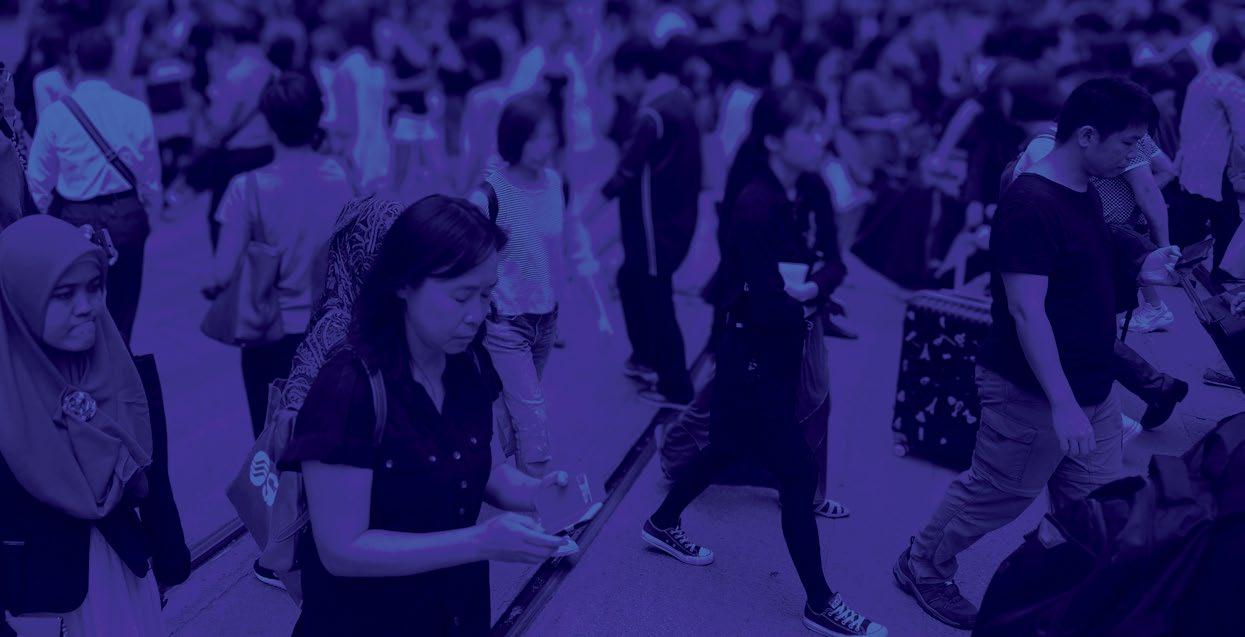
Dengue is a debilitating viral infection transmitted by mosquitoes. It has become the world's fastest-growing mosquito-borne disease, putting half of the global population at risk. In high-risk areas, an estimated 100–400 million people become infected each year, straining healthcare systems. A study published in Multimedia Tools and Applications, by researchers at the Universiti Malaysia Sarawak (UNIMAS), describes the development, design, and implementation of the hotspot detector app MozzHub.
Dengue is a major public health challenge in Malaysia, and traditional control methods such as spraying and fogging have been ineffective. The difficulty lies in accurately identifying the source of infection. Despite a 30.3% reduction in cases in 2020, attributed to a COVID-19-related movement control order, studies suggest that control measures should not focus solely on residential areas. Instead, it is crucial to consider the movement history of dengue patients two weeks before their symptoms start, to identify likely sources of infection. Unlike most early warning systems for dengue that lack real-time functionality, a system that considers the variations in human impact on the environment and the places they visit is needed.
Did you know?
Dengue is the world's fastest growing mosquito-borne disease. Half the world's population is at risk.
“The usual methods for finding dengue hotspots often rely on mere predictions that fail to focus on where the disease might actually spread," explains Jane Labadin, a professor and research fellow at UNIMAS. “Some of the methods that try to predict its spread need a lot of information and mostly look at large geographical areas.” She adds that the smaller details needed to control the mosquitoes spreading the disease are missed by these methods.
To tackle this problem, Labadin and her colleagues created MozzHub as a user-friendly web app built on an existing dengue model. Unlike the other methods, MozzHub considers how people move around, especially in smaller areas within a 400-metre radius. The model can identify the most probable sources of dengue infection based on patients’ movements and environmental factors, including temperature and humidity.
MozzHub was tested for user acceptance in several district health offices in Malaysia, aiming to help public health authorities make informed decisions on deploying dengue control measures and preventing future outbreaks.
“From the results of our study, it is clear that the system meets the criteria
of being useful, user-friendly, and capable of providing satisfactory experiences to its users,” says Wei King Tiong, a senior lecturer at UNIMAS and one of the study’s co-authors. “However, there is room for improvement at both the system and user levels to enhance overall user acceptance.” Perhaps the best part though, is that you do not need to be an expert to use this technology. You just input where people have been for the past two weeks, and MozzHub does the rest.

MozzHub could significantly aid in the management and control of dengue. It can offer vital information about the locations of infection sources, guiding targeted dengue control measures. The researchers hope that MozzHub can be applied in all district health offices across Malaysia in the future.

Prof Jane Labadin | ljane@unimas.my Universiti Malaysia Sarawak UNIVERSITI MALAYSIA SARAWAK
9 ASIA RESEARCH NEWS 2024 Further information
Mozzhub dashboard Credit: UNIMAS

DIVERSIFYING ECONOMIES
Researchers explore the benefits of export diversification in oil-rich Brunei, breaking free from the development economics "resource curse".

What you export matters. Countries abundant
resources often have slower economic growth than those with fewer resources and our results shed light on how economies can thrive.
Economies that mainly rely on one type of export face risks that could be mitigated by diversifying the exported products. Researchers at Universiti Brunei Darussalam (UBD) explored the potential benefits of export diversification using the example of oil-dependent Brunei. Their findings are detailed in the journal Resources Policy .
Economist Hazwan Haini, who led the research, says the study addresses a core issue in development economics known as the “resource curse”. He explains that countries abundant in natural resources often experience slower economic growth than those with fewer resources.
“Our results shed light on how these economies can potentially break free from this curse, marking a significant stride in economic thinking.”
The resource curse may hinder investment in sectors not tied to the country’s dominant export as the abundance of the main resource decreases incentives to explore other options. In oil-rich countries, including Brunei, cash influx from oil exports can cause an overvalued currency and a costly domestic labour market. Therefore, relying heavily on a single natural resource can impede growth and stifle innovation.
In their study, Haini and his colleagues created an index to measure export sophistication, diversification, and concentration. Export sophistication refers to the quality and complexity of exported goods. Countries with high export sophistication produce exports that
require advanced skills, innovation, and sophisticated technology, as opposed to the export of basic goods and raw materials. Export concentration occurs when a country relies heavily on a small number of products for the bulk of its exports.
“We used economic models to analyse Brunei's trade and development from 1995 to 2019,” Haini explains.
Over this period, Brunei had been actively seeking to reduce its reliance on oil, driven by fluctuating oil prices and declining production. Initiatives included advancements in oil refinery technology to generate a broader range of oil-derived products, expansion into the fertiliser industry, and agricultural developments. These efforts led to a decline in the share of oil and gas exports from 99.26% in 1992 to 91.09% in 2019. While significant, the scale of this change indicates that the success of diversification efforts will unfold gradually and at a slow pace — a key finding of the study.
Haini also stresses the importance of the types of exports and that diversification does not guarantee immediate economic growth. “It’s what you export that matters,” says Haini. The results emphasise that advancing towards export sophistication and higher-value products is essential.
In essence, the study shows that efforts to diversify exports can lead to a more advanced and technology-driven economy. However, this change takes time and requires a dedicated commitment to expanding the variety of exported goods.
Dr Hazwan Haini | hazwan.haini@ubd.edu.bn Universiti Brunei Darussalam UNIVERSITI BRUNEI DARUSSALAM
10 ASIA RESEARCH NEWS 2024 Further information
in natural

Join us for our online chat each month. Email info@asiaresearchnews.com for details. Sip and share. Come and join SciCom Coffee — our unique space for women science communicators working in Asia to share, support and elevate science communication.
BRAIN REPAIRS WITH NANOROBOTS
Magnetic nanorobots delivering nerve cells to targeted tissues could potentially be used to repair damaged brain tissue, as well as other organs.
Researchers have found that nerve cells, carried by magnetically powered nanorobots, can be guided towards specific sites in brain tissue to then establish structural and functional connections with the nerve cells of that tissue. While not yet realised in living organisms, the researchers believe their nanorobotic system could potentially be used in patients to treat nerve-related degenerative diseases and injuries. They describe their findings in the journal Advanced Materials
In the study, a magnetic neurospheroid (Mag-Neurobot), which is made up of magnetic nanorobots carrying live nerve cells (neurons), was introduced into a slice of brain tissue and then magnetically guided to a precise location within that tissue using an external magnetic field.

Once in place, the manoeuvred neurons were able to establish a direct connection with the targeted brain cells by connecting to their synapses, the area at which neurons connect and communicate with each other and with other cells.
“Our work demonstrates the precise delivery of healthy and functional neurons to a target tissue,” says Hongsoo Choi, a corresponding author of the study. “This is exactly what is required to achieve the reconstruction of damaged brain circuits.”
Using microscopy analysis and through the recording of electrical signals from the Mag-Neurobot connected with brain tissue, the researchers confirmed the magnetically delivered neurons were functionally connected to the targeted brain cells.
DAEGU GYEONGBUK INSTITUTE OF SCIENCE AND TECHNOLOGY
AI-generated artistic representation of brain neurons.
| mems@dgist.ac.kr
of Science and Technology
Prof Dr Hongsoo Choi
Daegu Gyeongbuk Institute
12 ASIA RESEARCH NEWS 2024 Further information


“We found the intervention of the Mag-Neurobot and the cells it delivered did not alter the normal function of the tissue they were added into,” says Jong-Cheol Rah, another corresponding author of the study. “This is important for any safe use of the technology in patients.”
The researchers believe there are other clinical and research applications beyond the direct repair or regeneration of brain circuits. Potential uses include sending regenerative stem cells to different organs, like the heart, and delivering drugs to specific tissues to test their effectiveness or potential side effects.
The team plans to conduct additional studies to determine if the neurons delivered by the Mag-Neurobot can remain healthy for the extended period
of time needed for structural and functional tissue repair.
“We have a long road ahead of us before Mag-Neurobots can be used in patients, but we have taken the important preliminary steps,” concludes Choi.
The research was a collaboration between teams in South Korea at Daegu Gyeongbuk Institute of Science and Technology (DGIST), led by Choi, a robotics and mechatronics engineer, and at Korea Brain Research Institute, led by Rah, a neurophysiologist. Important input also came from Eunhee Kim, who was a Ph.D student (currently a principal researcher at IMsystem Co., Ltd) and the first author of the paper.
DAEGU GYEONGBUK INSTITUTE OF SCIENCE AND TECHNOLOGY
The magnetic control system surrounding a tissue slice in the central petri dish precisely controls the Mag-Neurobot’s location.
Credit: Jong-Cheol Rah, Hongsoo Choi, et al. Advanced Materials. January 14, 2023.
13 ASIA RESEARCH NEWS 2024
VISIONARIES SHAPING A NEW MYANMAR
Three young fellows supported by IDRC’s Knowledge for Democracy Myanmar are tackling crucial issues in women’s rights, economic empowerment, and climate change through their research and advocacy endeavours.
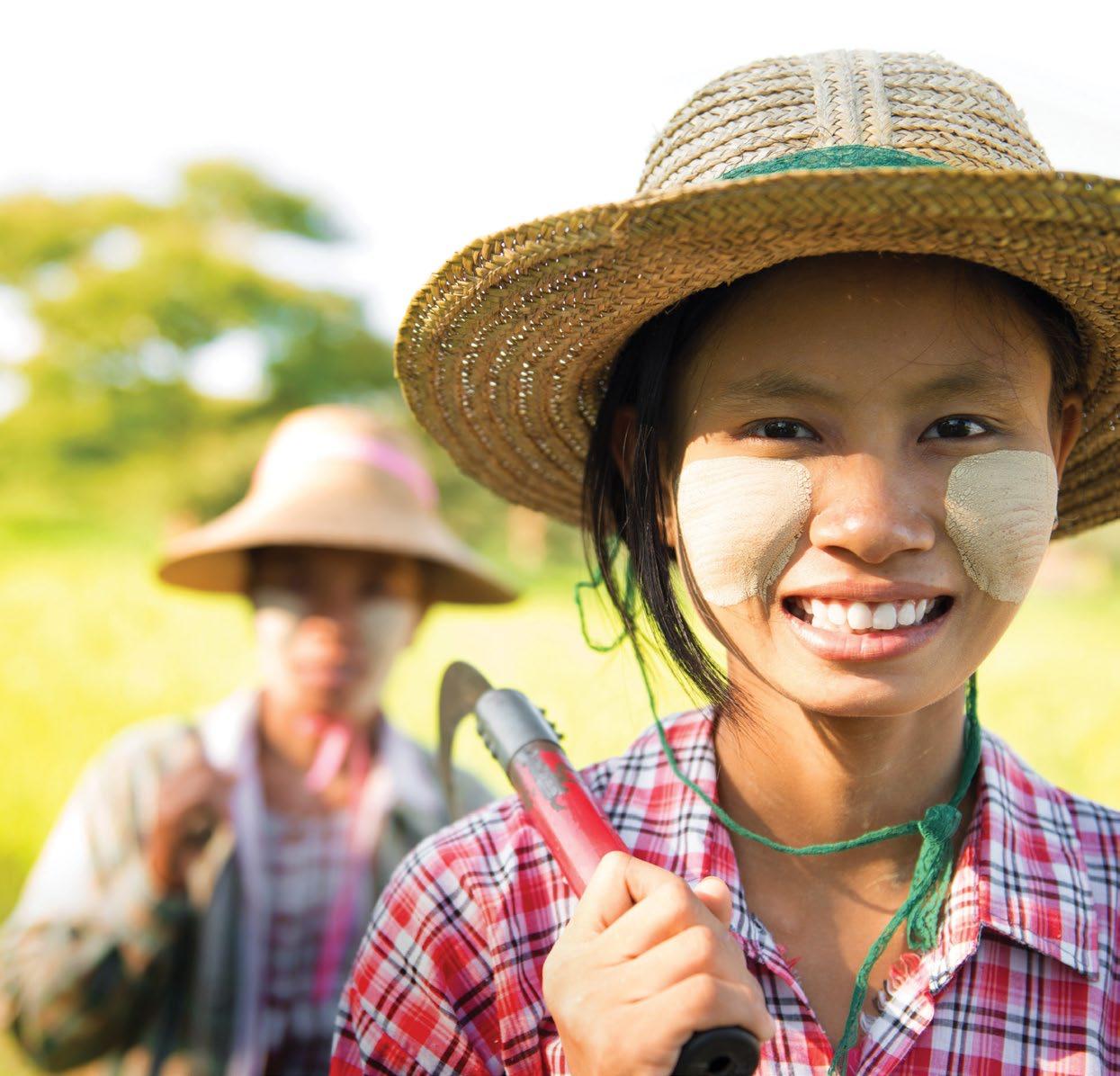
Since 2017, the Knowledge for Democracy Myanmar initiative (K4DM) has been working with researchers to support research and higher education capacity to generate evidence-based advice for public policy. Now in its second phase, the initiative continues to advance inclusion, diversity, gender equality and democratic values through research fellowships, policy training and cross-border capacity building. In this article, we get to know three fellows making strides in their respective fields, advancing knowledge and changing lives.
Knowledge for Democracy Myanmar (K4DM ) initiative | myanmar@idrc.ca International Development Research Centre (IDRC) INTERNATIONAL DEVELOPMENT RESEARCH CENTRE
Asia Research News is K4DM's communications consultant.
14 ASIA RESEARCH NEWS 2024 Further information
K4DM is an initiative of the International Development Research Centre (IDRC) in partnership with Global Affairs Canada.
CATALYST FOR CHANGE
The 2021 military coup in Myanmar has killed thousands and forced millions from their homes. Yet, devastation brings changes. In a recently published study, Aye Lei Tun, explored gender attitude shifts after the 2021 coup. The study looked at changes in perceptions surrounding cultural taboos, misogynistic notions on marginalised gender groups, and the evolution of women’s political engagement.
“I wanted to understand the driving forces in gender equality movements sparked by the coup and their impact on women's participation in politics,” Aye Lei says.
Aye Lei also looked into the obstacles faced by women in obtaining Myanmar’s National Registration Card, a crucial document for equal citizenship rights.
“Women, especially from minority groups, encounter discrimination, sanctioned by

patriarchal policies, in the application process,” she explained.
She has also co-authored a chapter in the book Putting Women Up: Gender Equality and Politics in Myanmar. Funded by Canada’s International Development Research Centre (IDRC), the book explores women’s experiences in political parties in Myanmar. In the chapter, Aye Lei provides insights into political parties, candidate selection methods, and their effects on women’s participation, shedding light on persistent gender inequality in Myanmar politics.
Aye Lei Tun is currently pursuing a PhD at Canada’s McMaster University, focusing on Myanmar gender and mediarelated studies. She is a novelist and previously worked as a journalist in Myanmar.
Aye Lei Tun | tuna@mcmaster.ca McMaster University INTERNATIONAL DEVELOPMENT RESEARCH CENTRE
STORY CONTINUED 15 ASIA RESEARCH NEWS 2024 Further information
AYE LEI TUN
GUARDING KNOWLEDGE
Saktum Wonti is an Earthkeeper. She and colleagues at Nagaland’s Highland Institute, chronicle traditional ecological knowledge and the impact of climate change on tribal communities along the Indo-Myanmar border. Their work offers a first-hand look into issues confronting the tribal communities.
With a master’s degree in Anthropology and ancestry from a tribe herself, Saktum brings a personal connection to her research. “The community that I’m from is one of the tribes residing along the border,” Saktum explains. “They face challenges resulting from an imposed international border which divides families and villages and disrupts Naga traditions linked to the land.”
For example, there are about 200 Khiamniungan villages, fifty of them are in India while 150 other villages are in Myanmar. In some cases, villagers have homes in India while their ancestral farms lie in Myanmar. The border, established during British rule in 1826, was imposed without consultation with tribal leaders.
The restriction to free movement within the ancestral tribal territories straddling this border has led to struggles for land and cultural preservation. Many villages have been left behind, lacking roads and basic amenities like markets and healthcare, requiring residents to walk for days to buy food and seek medical care.
Saktum and the Highland Institute are also helping find ways to address climate change effects. The team is working on conserving traditional foods by substituting current ingredients with those expected to be available in 2050, reviewing changes in cooking and diets whilst collaborating internationally on issues affecting critical regions like the Himalayas, Arctic, and the Amazon.
They participate in local events like the Biodiversity Festival which empowers women of diverse backgrounds and sustainable biodiversity through activities like the revival of traditional climate-resilient crops and seed exchanges from different regions, contributing to the conservation of diverse plant varieties and sharing of indigenous traditional knowledge.
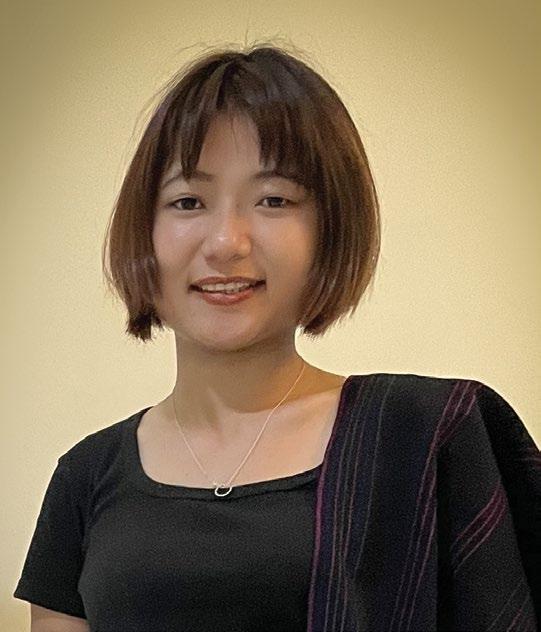
SAKTUM WONTI



INTERNATIONAL DEVELOPMENT RESEARCH CENTRE
Skulls of Mithun (Bos frontalis) are an indicator of social status in rural Naga society.
| saktum@highlandinstitute.org
Saktum Wonti
Highland Institute
Elderly women from Chakhesang tribe in Zhavame village. Photo taken during fieldwork.
STORY CONTINUED
Saktum Wonti and her colleagues speaking with seniors and representatives of Dan Village in Nagaland which is located in India but its cultivable fields lie in Myanmar.
Credit: Kevi Khezhie
Credit: The Highland Institute
16 ASIA RESEARCH NEWS 2024 Further information
Credit: The Highland Institute

NGU WAH WIN

INCLUSIVE ECONOMICS
Ngu Wah Win stands out for her influential contributions to the economic empowerment of women in Myanmar. “As a child from humble origins, my mother’s dedication taught me the value of work. Later in life, I faced numerous barriers as a woman seeking employment, despite my high qualifications,” says Ngu Wah. “These challenges inspired me to study labour markets, employment opportunities, and gender equality.
Ngu Wah has already made an impact in Myanmar's economic reforms with research to calculate the country’s first minimum wage, leading to the government adopting a minimum wage in 2015. This significantly improved conditions for
women especially in the manufacturing and garment industries.
"Prior to that, women were vulnerable to exploitation through lower wages compared to their male counterparts,” asserts Ngu Wah. “The gender inequality was obvious in both low-paying jobs and the limited promotion opportunities for highly educated women."
Her commitment to advancing gender equality is evident in her research on gender wage gaps, economic contributions of women, and the challenges they faced. Through collaborative research with researchers in Cambodia, Laos, and Vietnam, she highlighted how homebased online gig work can economically
empower women and its impact during the Covid-19 pandemic.
Ngu Wah is currently pursuing her PhD in Thailand’s Chiang Mai University, looking at the economic contributions of migrant workers in Thailand and the ASEAN region, especially those in domestic service which are 95% female. Additionally, Ngu Wah continues to actively engage with policymakers and to advocate for legal pathways and social protection reforms within the ASEAN region, showcasing her dedication as a driving force for positive change and the creation of a more inclusive and equitable society.

INTERNATIONAL DEVELOPMENT RESEARCH CENTRE
Ngu Wah Win | nguwahwin_nguwah@cmu.ac.th Chiang Mai University
STORY CONTINUED 17 ASIA RESEARCH NEWS 2024 Further information
NANO-JAB REVEALS CELL RESPONSES
A new technique allows researchers to map how the cellular “skeleton” adapts to external stress.
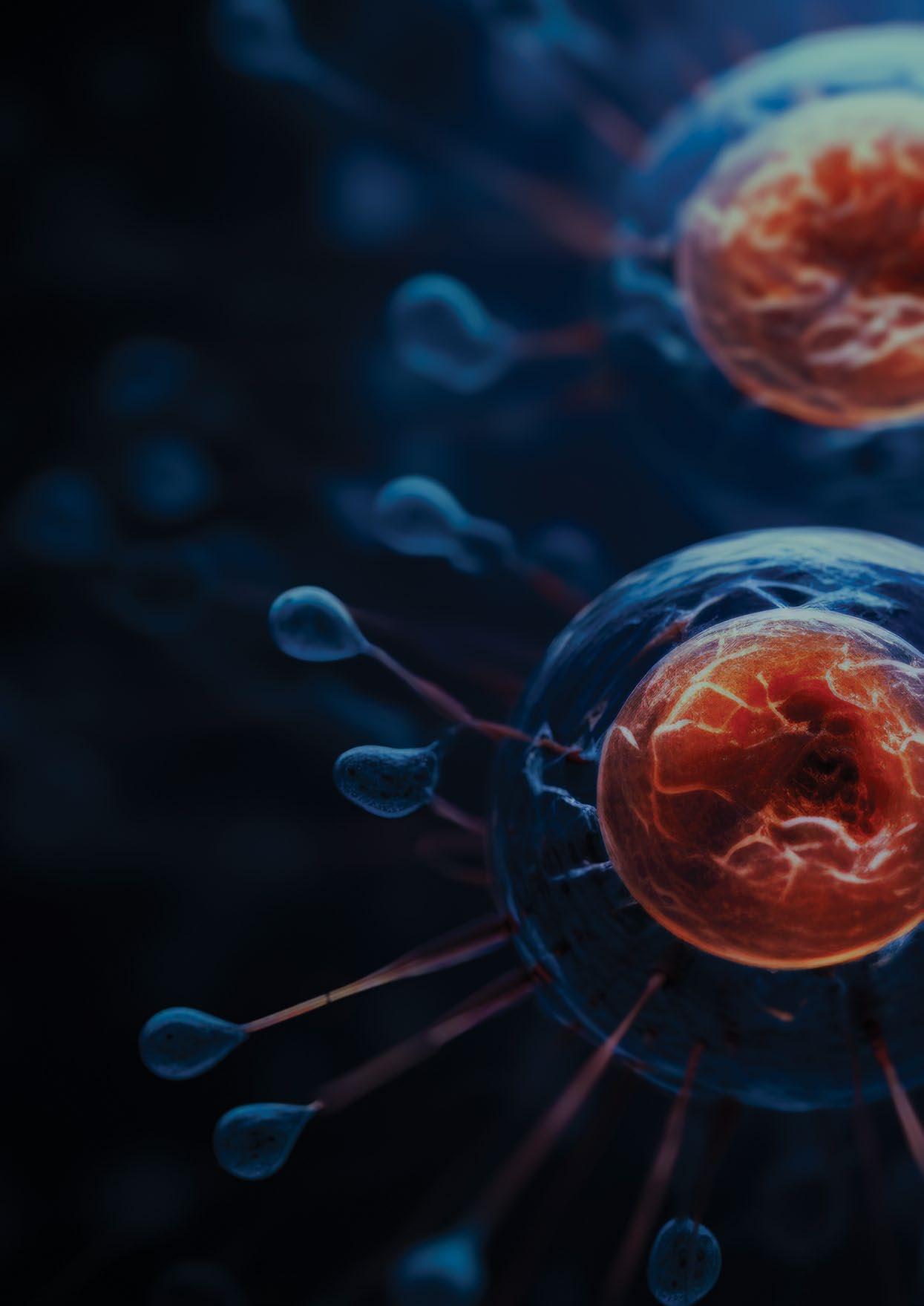
By giving living cells a “nano-poke” and monitoring the resulting changes in the intracellular environment, researchers have gotten their first glimpse of how whole cells respond to external mechanical pressure.
A team led by scientists from the National Institute for Materials Science (NIMS) in Tsukuba, Japan, used a technique called atomic force microscopy to apply force across the surface of various cells. The method uses nanoscale probes, with tips just a few billionths of a metre in size, to measure and map how force gets distributed across the cellular surface and throughout the cell. The researchers used machine learning to analyse and model the forces they measured. They also used fixing and staining techniques to study how the force distortion affected the cell’s internal structures and the microtubules and actin filaments that make up its “skeleton”. The study was published in the journal Science and Technology of Advanced Materials
“Cells are smart materials that can adapt to various chemical and mechanical stimuli from their surroundings,” says Jun Nakanishi, one of the corresponding authors of the study and the leader of
the Mechanobiology Group at NIMS. That ability to adapt relies on rapid feedback mechanisms to keep the cell intact and healthy, and there’s growing evidence that the failure of this cellular response underlies a range of ailments, including diabetes, Parkinson’s disease, heart attacks, and cancer.
So far, studies of these cellular responses have been limited by the techniques used – for example, some methods require that cells be pre-fitted with sensors, so they can only measure a small part of the response. “We invented a unique way to ‘touch’ a cell with nanoscale ‘hand’, so that the force distribution over a complete cell could be mapped with nanometre resolution,” says Hongxin Wang, who is the first author of the study and Japan Society for the Promotion of Science (JSPS) postdoc in the Mechanobiology Group.
The study revealed that tensional and compressional forces are distributed across actin fibres and microtubules within the cell to keep its shape, similar to how the poles and ropes of a camping tent work. When the researchers disabled the force-bearing function of actin fibres, they found that the nucleus itself is also involved in counterbalancing external
forces, highlighting the role of the internal structure of the nucleus in the cellular stress response.
The research team also compared the responses of healthy and cancerous cells. Cancer cells proved more resilient to external compression than the healthy cells, and they were less likely to activate cell death in response.
The findings not only illuminate the complex intracellular mechanics of the stress response, but the discovery of different responses in cancer cells could offer a new way to distinguish healthy and cancerous cells – a diagnostic tool based on cellular mechanics.
Hospitals currently use the size, shape, and structure of a cell in diagnosing cancer. However, these features don’t always provide enough information to tell the difference between healthy and diseased cells. “Our findings provide another way of checking cell conditions by measuring force distribution, which could dramatically improve diagnostic accuracy,” says Han Zhang, another corresponding author of the study and the senior researcher of the Electron Microscopy Group at NIMS.
NATIONAL INSTITUTE FOR MATERIALS SCIENCE Dr Jun Nakanishi | nakanishi.jun@nims.go.jp National Institute for Materials Science Dr Han Zhang | zhang.han@nims.go.jp National Institute for Materials Science Dr Hongxin Wang | wang.hongxin@nims.go.jp National Institute for Materials Science
18 ASIA RESEARCH NEWS 2024 Further information
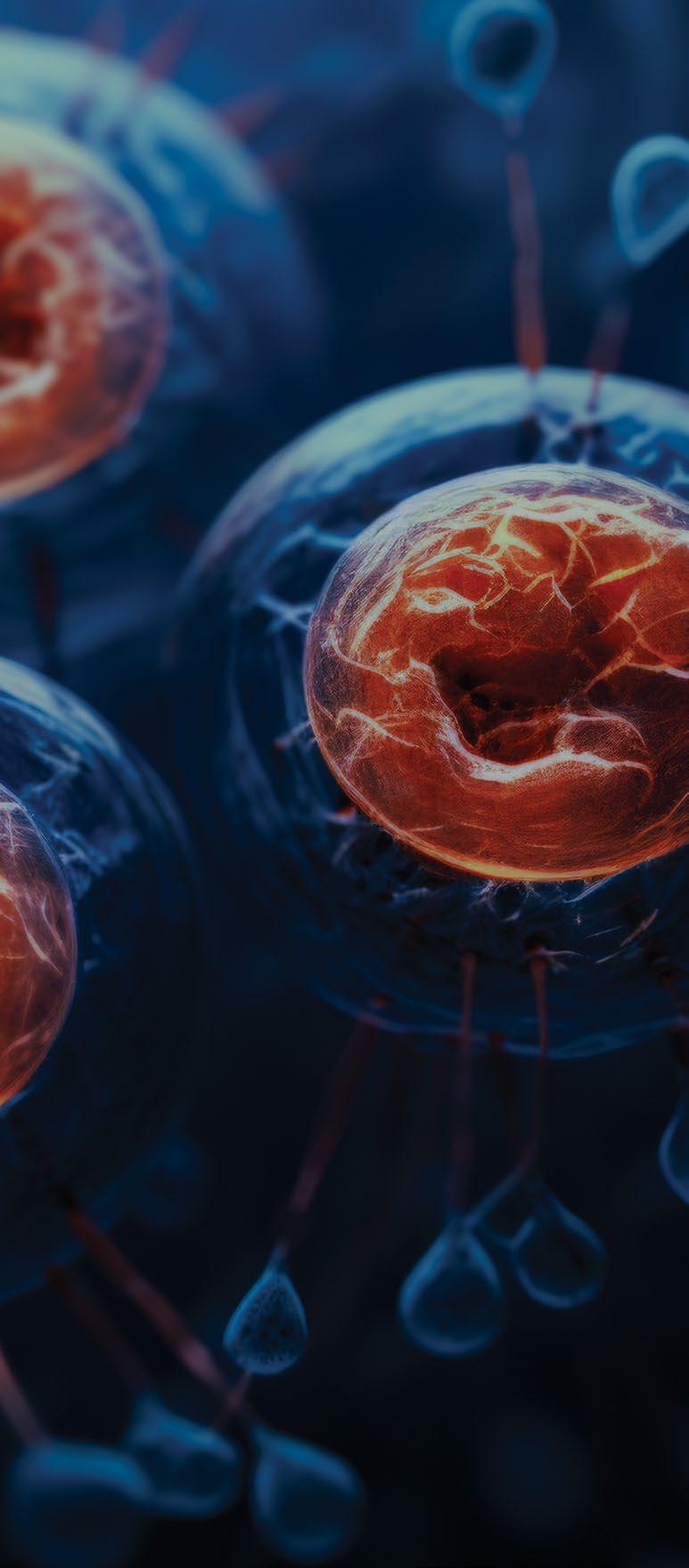
The new technique allowed the study of forces that keep cells in their shape, similar to how the poles and ropes of a camping tent work. This will enable scientists to understand healthy cells from cancer cells, providing a new diagnostic tool based on cellular mechanics. Dr


You’ll
ind it here.
f
Cutting-edge materials science research
nakamichi.yasufumi@nims.go.jp Science and Technology of Advanced Materials (STAM)
Yasufumi Nakamichi |
TURNING UP THE HEAT ON COMPOSITES
Experimental analysis and computer simulations reveal how woven fabric composite materials are deformed by heat.
Materials called triaxially woven fabric composites (TWFCs) have fibres woven together in three directions, commonly at a 60-degree angle to each other. They are becoming increasingly used in many applications but their response to heating and cooling has not been well-studied. Materials scientist Ahmad Kueh at the Universiti Malaysia Sarawak (UNIMAS) has now conducted a detailed examination of this significant knowledge gap. His results are published in the open access journal Heliyon.
The new experimental and theoretical understanding of a twisting motion on heating will help predict the material’s structural integrity and performance in different and changeable conditions.
“These innovative findings hold significant implications for a wide range of

applications, especially in the design of heat-resistant materials essential for the aerospace sector,” says Kueh.
When weaved using carbon fibres, then integrated with resins, TWFCs can combine the advantages of low weight, workability, strength, and resistance to corrosion. Some TWFCs are already used in applications ranging from aircraft fuselage and wing and engine components to sports equipment, including tennis rackets, golf club shafts, and bicycle frames.
Building on earlier work already published with collaborators, Kueh conducted a detailed examination, combined with computer simulations, of single sheets of a commercially available material supplied by the Sakase Adtech company. This incorporates carbon fibres manufactured by Toray Industries, Inc. in Japan. The sheets

Assoc Prof Dr Ahmad Kueh | kbhahmad@unimas.my Universiti Malaysia Sarawak UNIVERSITI MALAYSIA SARAWAK
20 ASIA RESEARCH NEWS 2024 Further information
In addition to aerospace applications, Kueh cites many possibilities, including reinforced concrete, sports equipment, body armour, and strong heat-resistant textiles for use by firefighters.
are open-weaved, meaning the interweaved fibres are separated by regularly spaced and stable hexagonal gaps. To make a single-ply composite structure, they were combined and cured with a hot liquified polymer resin that soaked through the fibres and then solidified on cooling.
When subjected to repeated heating cycles in the range from 20 °C to 100 °C, the research was able to analyse a twisting motion brought about by temperature changes. Detailed quantification of the experimentally observed deformations were in good agreement with those predicted by computer simulation.
“The new understanding will unlock the potential to improve the effectiveness of TWFCs across a wide range of industries,” says Kueh.
Together with colleagues, he now plans

to investigate the thermal dynamics of many other TWFCs, including different weave patterns, multiple-ply structures, and hybrid materials incorporating other types of composites. This future exploration will include collaboration with industry partners to undertake the practical tests needed to gain insights relevant to real-world uses.
In addition to aerospace applications, Kueh cites many possibilities, including reinforced concrete, sports equipment, body armour, and strong heat-resistant textiles for use by firefighters.
“Our discoveries pave the way for a future in which the combination of low weight and strength transforms numerous everyday products, making them more efficient, cost-effective, and resilient,” he concludes.
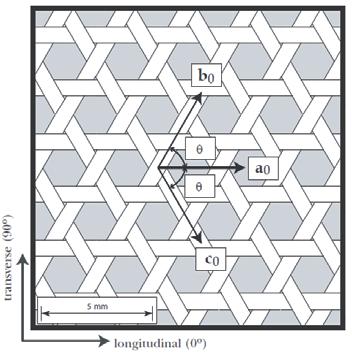 Credit:
Credit:
UNIVERSITI MALAYSIA SARAWAK -60o 5 mm 0O-direction 90 O -directio n 3.12 mm unit cell 5.404 mm 60o 0o 60o 60o
The weave pattern of the triaxially woven fabric composite (TWFC)
A.B.H. Kueh. Heliyon. June 24, 2023
21 ASIA RESEARCH NEWS 2024

Let's Communicate.
NEW PHASE IN ROBOTIC EXPERIMENTS
Researchers have developed a proof-of-concept system that allows robotic experiments to run without any human intervention.
The powers of artificial intelligence (AI) and robotic experiment systems have come together in a pioneering proof-ofconcept work at the National Institute for Materials Science (NIMS) in Japan. The researchers describe the development and demonstration of their “closed loop” automation software in the journal Science and Technology of Advanced Materials: Methods
“The overall aim of our work is to allow experiments exploring materials science to be designed and then proceed automatically, with no human intervention,” says physicist and software engineer Ryo Tamura at the NIMS Center for Basic Research on Materials. The AI first performs the information gathering and experimental design tasks normally done by humans, and then controls the robotic systems that can execute the required physical tasks.
The team demonstrated the potential of their system by using it to identify electrolytes that would be suitable for mediating the movement of ions in lithium-metal batteries.
The software, called the NIMS Orchestration System (NIMS-OS), contains two basic types of modules. The first uses AI algorithms to explore archived data on the properties of materials. It selects promising materials and proposes experimental procedures that would allow them to

achieve a desired aim. The second type of module generates the instructions needed to control a robotic system that will put the instructions into practice.
To make the whole process as easy to use as possible for a wide range of researchers, the team also designed an easy-to-use graphical user interface to control it.
“The results of initial work by the robotic system via NIMS-OS can be fed back to refine the AI algorithms that control it, through several cycles of test and improvement,” says Tamura.
In the proof-of-concept task that explored options for making electrolytes that maximise the performance of an electrode in a lithium-metal battery, NIMS-OS utilised systems that were robotically assembled into electrochemical cells and subjected to charging and discharging cycles to analyse their performance. The results clearly identified the better electrolyte composition and indicated there is room for improvement on the electrolytes that are currently widely used commercially.
“Our NIMS-OS is now publicly available as open-source software at the widely used GitHub website,” says Tamura. “We now plan to develop it further to allow it to work together with many different types of robotic experiment systems.”
Dr Ryo Tamura | tamura.ryo@nims.go.jp National Institute for Materials Science NATIONAL INSTITUTE FOR MATERIALS SCIENCE
Dr Yasufumi Nakamichi | nakamichi.yasufumi@nims.go.jp Science and Technology of Advanced Materials: Methods (STAM-M) 23 ASIA RESEARCH NEWS 2024 Further information
SUSTAINABLE CITIES: SEEDS OF CHANGE FOR A GREENER FUTURE
At Xi’an Jiaotong-Liverpool University, four researchers in diverse fields of study – from urban planning to digital architecture – are working hard to reach sustainability goals.


A smart city actually means using technology or human resources to ensure that everyone can enjoy the urban services and infrastructure in a more effective way.
The year 2007 marked a major tipping point for human civilisation. For the first time in history, more people lived in cities than in rural areas. By 2050, more than two-thirds of humanity is projected to live in urban environments. For this reason, the United Nations General Assembly's Sustainable Development Goal 11 is especially vital and urgent. Goal 11, titled “sustainable cities and communities,” aims to make cities and human settlements more inclusive, safe, resilient, and sustainable.
At Xi’an Jiaotong-Liverpool University in Suzhou, China, four researchers working in diverse fields of study – from urban planning to digital architecture – are working hard to reach this important goal.
A tough transition
Juhyun Lee, an assistant professor in the Department of Urban Planning
and Design, and Director of Sustainability of the Design School, has a long history in the practice of sustainable urbanisation. Since 2010, she has worked with UN-Habitat, the United Nations’ programme for human settlements and sustainable urban development. The programme aims to embed sustainability in all levels of urban policy, from the municipal to the national.
When she began, the idea of sustainable urbanisation was still very new, and aspired to the lofty triple goals of social equity, environmental sustainability, and economic prosperity. As the field of sustainable urbanisation has matured, bringing these goals together has sometimes proven to be a challenging task, as the three goals can sometimes work against each other. “ We say we want to achieve both social equity and economic
XI’AN JIAOTONG-LIVERPOOL UNIVERSITY
Juhyun Lee is focused on managing conflict between three main goals of a sustainable city: social equity, environmental sustainability and economic prosperity.
Asst Prof Juhyun Lee | juhyun.lee@xjtlu.edu.cn Xi’an Jiaotong-Liverpool University
24 ASIA RESEARCH NEWS 2024 Further information
Flexible polymer solar cells can be printed onto various surfaces such as a backpack to provide power for someone on the move.

prosperity – while reducing damage to the environment – but now we understand this is actually very difficult,” says Lee. “I'm currently more focused on how to manage conflict between the three goals.”
Lee is particularly interested in the role that urban mobility plays in managing this conflict. “A smart city actually means using technology or human resources to ensure that everyone can enjoy the urban services and infrastructure in a more effective way,” says Lee. For example, social sustainability requires that everyone have access to a hospital. However, this could entail an hour-long drive, which would conflict with environmental sustainability.
Therefore, urban design in sustainable cities necessitates the development of infrastructure, such as public transport, that is not only effective and efficient, but also equitable. A recent study by Lee
and her colleagues examined commuter perceptions of urban transport in the rapidly growing Indonesian city of Jakarta. The study highlighted how shorter commutes and reduced traffic congestion were of greater importance to commuters than comfort, in terms of transportation accessibility.
Flexible solar power
Renewable energy technology is a key component of sustainable cities, enabling the shift from fossil fuels to sustainable energy sources, such as solar power. Yi Lin is using her background in organic chemistry – the study of carbon-containing compounds – to find ways to improve solar photovoltaic cells. “Organic solar cells are considered the next generation of solar cells,” says Lin.
Instead of the silicon crystals in

conventional solar cells, organic solar cells use conjugated polymers or small molecules – chemically bonded chains of carbon-containing molecules. As a result, organic solar cells can be more lightweight and flexible than silicon-based solar photovoltaic cells.
Organic solar cells are still in the early stages of development, and they’re not yet as efficient as silicon-based cells. Nevertheless, Lin is excited by the possibilities created by their other features, particularly their flexibility. She explains that flexible polymer solar cells can be printed onto various surfaces. For instance, a backpack with flexible solar photovoltaic cells could provide power for someone on the move. Another example would be a balloon using flexible solar cells to power scientific devices for monitoring atmospheric conditions.
XI’AN JIAOTONG-LIVERPOOL UNIVERSITY
Assoc Prof Yi Lin | yi.lin@xjtlu.edu.cn Xi’an Jiaotong-Liverpool University
Yi Lin is excited about the possibilities of organic solar cells, which can be lighter and more flexible than the silicon-based cells.
STORY CONTINUED
25 ASIA RESEARCH NEWS 2024 Further information
Better ways to build
Architectural improvements are also vital for sustainable cities. Mia Tedjosaputro, an architect with an interest in digital architecture, is applying her skills to the challenges of sustainable urbanisation. “Technological advancement is great, but I found myself thinking about what we can really do with it,” she says.
A workshop on using bamboo in construction got her thinking about how the choice of building materials affects the sustainability of the construction industry. “The construction industry pollutes so much, not just through waste, and not just in construction itself, but also during maintenance,” says Tedjosaputro. “We are one of the highest polluting industries.”
Along with her new PhD student, Tedjosaputro is trying to bring a circular economy approach to architecture and design. This approach involves the use of sustainable and reusable building materials, such as bamboo, to keep such materials circulating in the economy and prolonging their life cycle as long as possible. But circularity needs to be incorporated from the beginning of the design process. As explained by Tedjosaputro, “It's not something that we can switch to halfway during the conceptual design.”
This is where her experience with digital architecture comes into play. Tedjosaputro is using technologies, like holographic construction and augmented reality, to examine how non-standard building materials will look and feel in a construction. This improves the process of architectural design. “It’s more than just preaching about the circularity of materials,” Tedjosaputro explains. “It’s also about how we can translate them into use in our daily life.”


This bamboo structure was up for 6 months, then dismantled, cleaned, and turned into a kayak which we used along the river in the mountains. This was the beginning of my interest in circular design.
XI’AN JIAOTONG-LIVERPOOL UNIVERSITY
Mia Tedjosaputro uses holograms and augmented reality to examine reusable building materials for the construction industry, one of the most polluting of industries.
Asst Prof Mia Tedjosaputro | mia.tedjosaputro@xjtlu.edu.cn Xi’an Jiaotong-Liverpool University STORY CONTINUED 26 ASIA RESEARCH NEWS 2024 Further information
In order for us to have seeds available to achieve the most ambitious restoration goals, we need conservation seed bank knowledge, as well as restoration seed banks.


Seeding the future
Sustainable urbanisation also needs healthy landscapes within and around cities. Seed banks are an important tool for restoring landscapes that have been degraded or deforested. Uromi Goodale became entranced by seeds as a child. Goodale fondly remembers watching her father plant chili seeds in the misty rain so as to provide the best possible conditions for their germination. She went on to become a tropical plant ecophysiologist, completing a PhD at Yale University, followed by a postdoctoral position at the Xishuangbanna Tropical Botanical Garden in Yunnan, China.
Goodale’s research has a clear practical goal: improving the success rate of restorative seed banks. Conservation seed banks are a well-established concept and are important for preserving threatened species. However, they usually lack the quantities of seeds needed for restoration. Restorative seed banks make up this lack by providing the large volumes of seeds needed to restore degraded or deforested landscapes.
“There has recently been a report from the US saying that we’re not well prepared for restoration because of the lack of native seed sources,” says Goodale. “In order for us to have seeds available to achieve the most ambitious restoration goals, we need conservation seed bank knowledge, as well as restoration seed banks.”
XI’AN JIAOTONG-LIVERPOOL UNIVERSITY
Uromi Goodale's goal is to improve the success rate of restorative seed banks, which are needed to restore degraded or deforested landscapes.
| uromi.goodale@xjtlu.edu.cn Xi’an Jiaotong-Liverpool University STORY CONTINUED 27 ASIA RESEARCH NEWS 2024 Further information
Prof Uromi Goodale
ROBOTIC UNVEILING OF CRYSTAL STRUCTURES
Researchers have combined machine learning with robotic process automation to speed up and simplify a time-consuming process.

Researchers at the National Institute for Materials Science (NIMS) in Japan have automated a complex and labour-intensive process for analysing the results of X-ray diffraction studies, which are used to determine the structure of crystalline materials . The team described the development and application of their technique in the journal Science and Technology of Advanced Materials: Methods
X-rays fired at a crystal interact with the geometric arrangement of its particles and are diffracted in many directions in a complex pattern of rays that depends on the crystal’s precise structure. Experts analyse the pattern and intensity of the diffracted X-rays to determine the crystal’s internal
arrangement. This is a powerful and widely used process for revealing the three-dimensional atomic structure of new materials.
A well-established mathematical procedure, called Rietveld analysis, is used for interpreting X-ray diffraction data, but it is time-consuming and requires manual trial-and-error refinement of the results.
“To reduce human costs and resources, we have developed a robotic process automation (RPA) system that we apply to an existing Rietveld analysis program called RIETAN-FP,” says Ryo Tamura of the NIMS team. “By using our new procedure, with the help of machine learning, we have succeeded in performing Rietveld analysis automatically,” Tamura adds.
The automation can be run on a personal computer and can reduce human error as well as greatly speed up the data analysis.
Tamura explains that the field of materials science already relies on numerous graphical user interface (GUI) applications to calculate a material’s properties, control experimental equipment, or analyse material data. He says that combining this new RPA and machine learning ability with these applications achieves a “closed loop” to automatically design and analyse materials with minimal human intervention.
The researchers verified the accuracy of their procedure by analysing samples of powdered compounds whose crystal
Dr Ryo Tamura | tamura.ryo@nims.go.jp National Institute for Materials Science
NATIONAL INSTITUTE FOR MATERIALS SCIENCE
Dr Yasufumi Nakamichi | nakamichi.yasufumi@nims.go.jp Science and Technology of Advanced Materials: Methods (STAM-M) 28 ASIA RESEARCH NEWS 2024 Further information
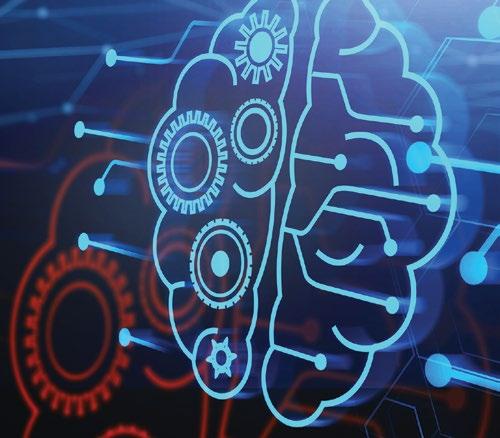
By combining machine learning with robotic process automation, researchers automated a mathematical procedure that determines the structure of crystalline materials.

structures are already known. The ability to determine the structures from powdered samples is one of the great strengths of Rietveld analysis. It avoids the need to grow large single crystals, which can be extremely difficult to obtain for some materials.
“Automating Rietveld analysis brings a very powerful new tool into the entire field of materials science,” Tamura concludes.
The researchers are now working to further refine their procedure to make it suitable for more complex crystal structures. Another aim is to explore the use of their machine learning RPA strategy for more general applications in materials science. The possibilities include numerous simulation methods used for calculating material properties and also applications for controlling experimental equipment. The success achieved thus far with X-ray diffraction could just be the start for Rietveld robotics.
We now have a powerful new tool for materials science which could signal the start for Rietveld robotics.

Smart Strategy
Advance Knowledge
SCAN OR CLICK
CONSULTANCY
Inspire Communities
Build Relationships
OUTREACH
A UNIVERSE WITHOUT LIGHT
Jun’ichi Yokoyama once amused his professors by proposing a far-fetched idea of using neutrinos and gravitational waves to observe the Universe. Decades later, he was proven right and contends young scientists should be nurtured to believe in themselves.
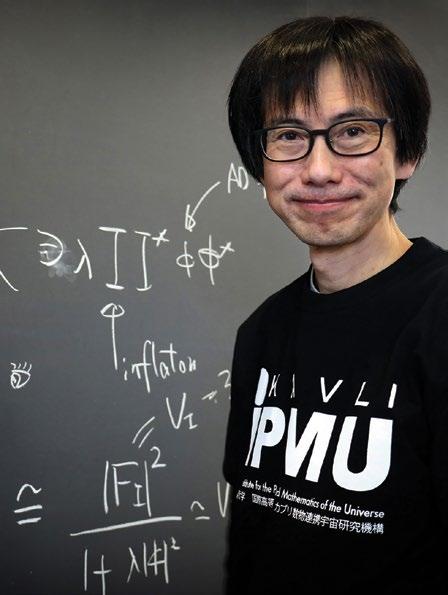 Credit: Kavli IPMU
Credit: Kavli IPMU
Neutrinos & gravitational waves
When theoretical physicist Jun'ichi Yokoyama was 21 years-old, he was interviewed by a panel of older, experienced physicists who wondered if the young researcher had what it took to join their university's graduate program.
"Describe a way to observe the universe that doesn’t involve light," one asked him.
"Maybe neutrinos or gravitational waves," replied young Yokoyama.
A roar of laughter echoed through the room and Yokoyama went home that day feeling dejected.
Fortunately, Yokoyama was accepted into the graduate school, and he put the interview behind him.
Yokoyama continued with his career in physics, advancing our understanding about how the universe is shaped, and was recently named the third director of the Kavli Institute for the Physics and Mathematics of the Universe (Kavli IPMU) at The University of Tokyo.
Now at the age of 60, older than the professors that interviewed him all of those years ago, Yokoyama understands how far-fetched his ideas must have seemed to the panel. Yet he was right.
Just as Yokoyama was finishing up his master’s degree, researchers around the world detected neutrinos from an exploding star 160,000 light years from Earth. Those who detected it were none other than a group of experimentalists working in the same building as Yokoyama. The group’s leader Masatoshi Koshiba was later awarded the Nobel Prize in Physics in 2002.
Then exactly 31 years after his interview, gravitational waves were discovered in 2015, which led to another Nobel Prize in Physics to US researchers. Gravitational wave detectors now exist in the United States, Europe and Japan, paving the way for major international collaborations using gravitational waves to study things about the Universe that no one has ever been able to before.


Prof Jun'ichi Yokoyama | press@ipmu.jp Kavli Institute for the Physics and Mathematics of the Universe KAVLI IPMU | THE UNIVERSITY OF TOKYO
Simulation of two merging black holes showing the degree of perturbation of the space-time fabric creating gravitational waves. Credit: Werner Benger
Jun'ichi Yokoyama is Director of Kavli IPMU
32 ASIA RESEARCH NEWS 2024 Further information
Did you know?
The discovery of gravitational waves opened up opportunities to look back further in time, to when the Universe may have been a trillion to a quadrillion times hotter than the hottest place in the Universe today.
In the vast Universe, gravitational waves are swift, unseen ripples, racing at the speed of light — 300,000 kilometers per second. These waves create a gravitational pull, causing a rhythmic squeeze and stretch as they travel across space.
Lessons from the past
Currently, no one knows what the Universe looked like before 380,000 years old. This point in time is often called First Light, when the first atoms appeared which researchers can detect and study. Yokoyama likens this to studying stars like our Sun. When it is sunny, there is no problem measuring the Sun’s properties, but when it is cloudy, no one can do anything.
“In a way, the universe before 380,000 years is all cloudy. But gravitational waves can help shed light on this. Using gravitational waves we can study the exact moment cosmic inflation and the Big Bang happened.”
So 21-year-old Yokoyama was right all along. What lesson does this teach us?
"My advice to young researchers is to not take everything I say to heart. Because obviously people my age don't always
know what we're talking about," he said.
“What is appropriate for people my age is to create an environment which can support these young researchers to do what they do to the best of their ability.”
Something that Yokoyama hopes to accomplish as the new leader of Kavli IPMU.
If there is some time left over, Yokoyama can return to his own research on inflation theory, the idea that right after the Big Bang, the universe very briefly, expanded extremely rapidly. While inflation lasted less than a second, many researchers believe it was enough to trigger growth and the birth of all things in the universe we know today.
But to test Yokoyama’s theories, he will need the help of experimental scientists to find evidence. Evidence Yokoyama believes can be found with
gravitational waves. It is one of the reasons why Yokoyama had volunteered to become spokesperson for KAGRA, Japan’s gravitational wave detector, until recently, in order to drive forward collaborations between the other detector projects LIGO in the US and VIRGO in Europe.
“What I really want to see is the launch of DECIGO, a gravitational wave detector that will be launched into space. But before we can even think of doing that, we need to work on perfecting the gravitational wave detectors on Earth.”
At least while he waits for the experiments to improve, Yokoyama only needs the most basic of tools to continue his theoretical work.
“All I need is a piece of paper and something to write with.”
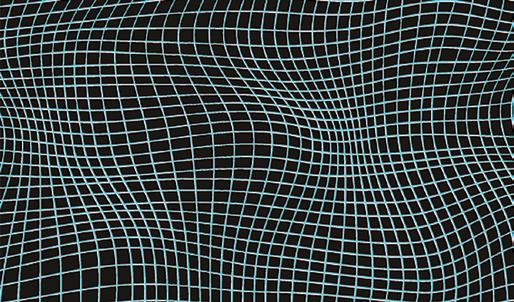


KAVLI IPMU | THE UNIVERSITY OF TOKYO
STORY CONTINUED
Credit: Ingrid Bourgault, CC BY-SA 4.0, via Wikimedia Commons
· · · · ·
Credit: Kavli IPMU
33 ASIA RESEARCH NEWS 2024
An artist's conception of how gravitational waves distort the shape of space and time in the universe.
Did you know?
To date, gravitational wave detectors have identified waves resulting from the merging of neutron stars and black holes. But researchers say gravitational waves can also help clarify other aspects of our Universe's foundation, including why more matter was left over after Big Bang which led to the birth of stars and planets and humans.

Kavli Institute for the Physics and Mathematics of the Universe (Kavli IPMU) has a number of ongoing research on gravitational waves. Here are a few recently published studies.
HOW THE TINIEST PARTICLES SAVED US FROM ANNIHILATION
Neutrinos, the smallest particle we know may have rearranged matter and anti-matter after the Big Bang, allowing life to survive. A 2020 study suggests that gravitational waves, ripples in space-time, may hold this evidence. According to the Big Bang theory of modern cosmology, matter and anti-matter should have annihilated each other completely, but our existence contradicts this. The study proposes that a phase transition in the early Universe, facilitated by neutrinos, created a thin tube of magnetic fields called cosmic strings that rearranged themselves, generating tiny wobbles in space-time called gravitational waves that scientists could detect in the future through space-borne observatories.


A
STORY CONTINUED
Japan's KAGRA is the first gravitational wave observatory in the world to be built underground. This is an overhead view of the telescope installed beneath Mt Ikeno.
vacuum duct stretches a 3 km length through the KAGRA (X arm) tunnel.
Photo courtesy: KAGRA Observatory, ICRR, The University of Tokyo
Credit: KAGRA
Motoko Kakubayashi | motoko.kakubayashi@ipmu.jp Kavli Institute for the Physics and Mathematics of the Universe KAVLI IPMU | THE UNIVERSITY OF TOKYO 34 ASIA RESEARCH NEWS 2024 Further information
This image is an artistic representation of the merging of two black holes and the gravitational waves that ripple outward as the black holes spiral toward each other. The black holes — which represent those detected by LIGO on Dec. 26, 2015 — were 14 and 8 times the mass of the sun, until they merged, forming a single black hole 21 times the mass of the Sun. In reality, the area near the black holes would appear highly warped, and the gravitational waves would be difficult to see directly.

WHY MORE MATTER WAS LEFT OVER AFTER BIG BANG
The existence of more matter than anti-matter after the Big Bang, allowed the creation of the Universe and life but contradicts current physics theories. The answer could be in Q-balls, a blob of field with similar characteristics to the Higgs boson. In 2021, a team of theoretical researchers, including Kavli IPMU scientists, proposed a new method to detect Q-balls in gravitational waves. The researchers suggest that Q-balls decay so suddenly that they would have become detectable gravitational waves. If this theory holds, the detection of gravitational wave signals could confirm a new understanding of the early Universe.
EXPLORING THE EARLIEST UNIVERSE DYNAMICS
Scientists are looking to understand how gravitational waves are made. A 2023 study revealed a new mechanism by oscillons localized non-linear massive structures originating from the Universe's inflationary period following the Big Bang. Oscillons, can persist for long periods, and their decay generates gravitational waves. Researchers simulating the early universe, confirmed the presence of oscillons and demonstrated that their decay could produce detectable gravitational waves. The ongoing advancements in gravitational wave detectors and supercomputing resources are expected to bring more insights into the early Universe.
Credit: R. Hurt/Caltech-JPL

STORY CONTINUED
KAVLI IPMU | THE UNIVERSITY OF TOKYO 35 ASIA RESEARCH NEWS 2024
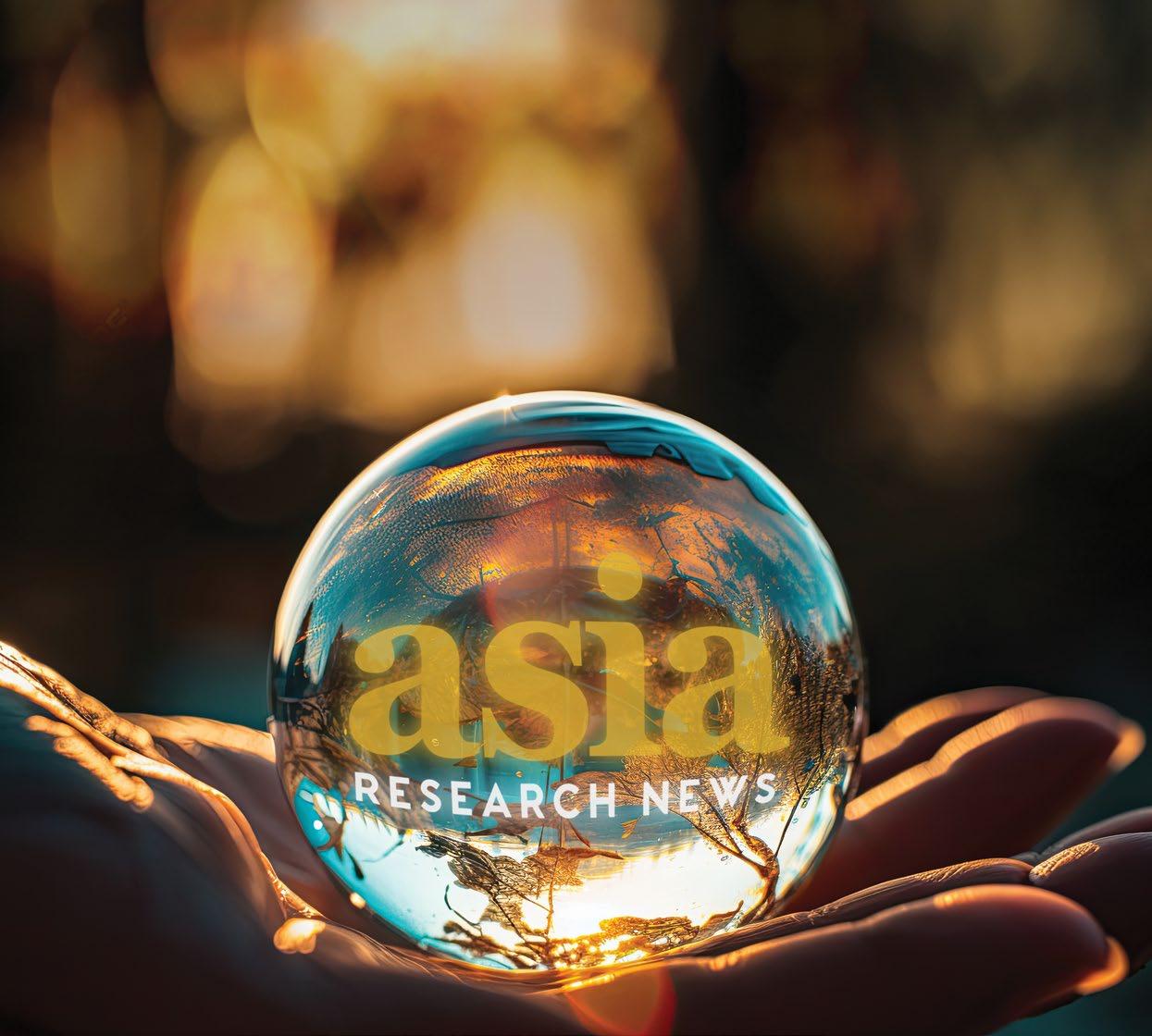
NEW BIO-ARMOUR FOR VACCINE CARRIERS
A new coating for tiny vaccine carriers allows vaccines to remain in the body for longer.

A biocompatible polymer could help deliver vaccines and drugs with reduced risk of the rare dangerous adverse reaction called anaphylaxis. Researchers at the National Institute of Advanced Industrial Science and Technology (AIST) in Japan have developed the polymer and performed preliminary tests, which they report in the journal Science and Technology of Advanced Materials
Until now, the polymer of choice for encasing and delivering vaccines has been polyethylene glycol (PEG). This synthetic, flexible, water-soluble material has been used to surround some COVID-19 vaccines carried within the tiny spherical packages known as liposomes.
Unfortunately, some recipients have suffered an anaphylactic reaction to PEG, in which the immune system mounts an allergic response to the foreign material. Symptoms of anaphylaxis range from minor skin irritations to breathing difficulty, nausea, and, in the worst cases, unconsciousness and sudden death.
The alternative polymer is a form of fatty biomolecule called a lipid, and it is conjugated to 2-methacryloyloxyethyl phosphorylcholine (MPC) polymer.
This new substance spontaneously binds to the outside of liposome particles when mixed with them in water. Crucially, the polymer is not recognised by the antibodies that the body can generate in response to PEG, and tests suggest it does not stimulate any other antibodies that could cause an allergic reaction. This should allow coated liposomes containing
a vaccine to be retained in the body for a longer time without being cleared by the immune system, in addition to avoiding anaphylaxis.
“We have also found that the polymer avoids other interactions with proteins in the blood that might otherwise interfere with its effects, and it also prevents liposomes from aggregating together,” says molecular engineer Yuji Teramura of the AIST team.
Credit: Yuji Teramura
anaphylaxis in response to PEG,” Teramura concludes.
The polymer must now be thoroughly tested in various real vaccine applications. The team is moving into this next crucial phase of the development process, prior to eventual clinical trials in humans.
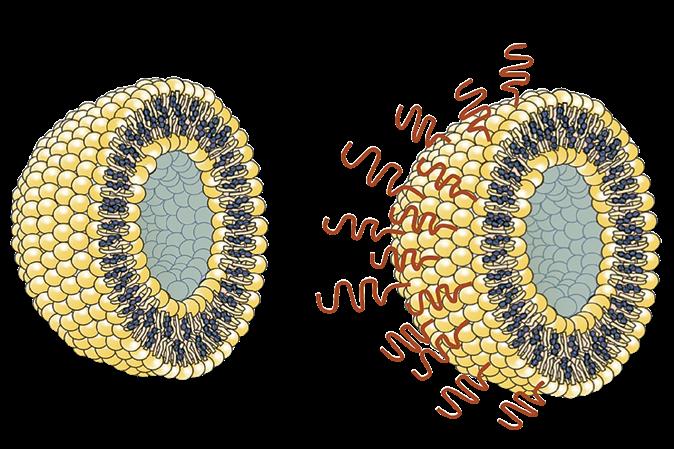
Tests confirm the coated liposomes can remain stable in storage for 14 days, sufficient for real clinical applications.
“All the indications suggest that our technology should be suitable for delivering vaccines into patients who develop
Provided the animal and subsequent clinical trials go well, the technology should offer opportunities for delivering drugs into the body, in addition to vaccines. Delivery systems such as liposomes are sometimes needed to protect drugs from biochemical processes that might degrade them. This can ensure that they reach the target disease tissues while remaining in their active form.
NATIONAL INSTITUTE FOR MATERIALS SCIENCE Dr
| y.teramura@aist.go.jp National Institute of Advanced Industrial Science and Technology (AIST) Dr Yasufumi Nakamichi | nakamichi.yasufumi@nims.go.jp Science and Technology of Advanced Materials (STAM)
Yuji Teramura
A liposome (left) containing a vaccine is commonly coated with polyethylene glycol (PEG) but it can trigger an allergic reaction in some recipients. A newly developed lipid (right) could serve as a safer alternative liposome-coating while retaining the vaccine longer in the body.
37 ASIA RESEARCH NEWS 2024 Further information
MACHINE LEARNING IMPROVES X-RAY MATERIALS ANALYSIS
Analysis of materials can be done quicker and with less expertise with the help of proven machine learning techniques established in biomedical fields.
Researchers of RIKEN at Japan’s stateof-the-art synchrotron radiation facility, SPring-8, and their collaborators have developed a faster and simpler way to carry out segmentation analysis, a vital process in materials science. The new method was published in the journal Science and Technology of Advanced Materials: Methods.
Segmentation analysis is used to understand the fine-scale composition of a material. It identifies distinct regions (or “segments”) with specific compositions, structural characteristics, or properties. This helps evaluate the suitability of a material for specific functions, as we ll as its possible limitations. It can also be used for quality control in material fabrication and for identifying points of weakness when analysing materials that have failed.
Segmentation analysis is very important for synchrotron radiation X-ray computed tomography (SR-CT), which is similar to conventional medical CT scanning but
uses intense focused X-rays produced by electrons circulating in a storage ring at nearly the speed of light. The team has demonstrated that machine learning is capable of conducting the segmentation analysis for the refraction contrast CT, which is especially useful for visualising the three-dimensional structure in samples with small density differences between regions of interest, such as epoxy resins.
“Until now, no general segmentation analysis method for synchrotron radiation refraction contrast CT has been reported,” says first author Satoru Hamamoto. “Researchers have generally had to do segmentation analysis by trial and error, which has made it difficult for those who are not experts.”
The team’s solution was to use machine learning methods established in biomedical fields in combination with a transfer learning technique to finely adjust to the segmentation analysis of SR-CTs. Building
on the existing machine learning model greatly reduced the amount of training data needed to get results.
“We’ve demonstrated that fast and accurate segmentation analysis is possible using machine learning methods, at a reasonable computational cost, and in a way that should allow non-experts to achieve levels of accuracy similar to experts,” says Takaki Hatsui, who led the research group.
The researchers carried out a proof-ofconcept analysis in which they successfully detected regions created by water within an epoxy resin. Their success suggests that the technique will be useful for analysing a wide range of materials.
To make this analysis method available as widely and quickly as possible, the team plans to establish segmentation analysis as a service offered to external researchers by the SPring-8 data centre, which has recently started its operation.


Dr Yasufumi Nakamichi | nakamichi.yasufumi@nims.go.jp Science and Technology of Advanced Materials: Methods (STAM-M) Public Relations Office | ex-press@riken.jp RIKEN NATIONAL INSTITUTE FOR MATERIALS SCIENCE
Credit: en:User:Artorius, CC BY-SA 3.0, via Wikimedia Commons 38 ASIA RESEARCH NEWS 2024 Further information
SPring-8 is one of five large synchrotron radiation facilities in the world. SPring-8 stands for Super Photon Ring 8 Gigaelectron volt (GeV), referring to its beam energy of 8 billion electron volts.

ILLUMINATING CRYSTALS
Coordination polymer crystals show promise as a new generation of light sources for industry and medicine.

New forms of the light-emitting materials called phosphors, with enhanced versatility relative to existing options, are being developed by researchers at the National Institute for Materials Science (NIMS) in Japan, with colleagues at Tokyo University of Science and Hokkaido University. The work is published in the journal Science and Technology of Advanced Materials
Phosphors absorb the energy of electromagnetic radiation, including visible light and X-rays, and then release it in colours that depend on their properties. They are used in many applications, including light-emitting diodes (LEDs), display screens, scintillators that detect radiation such as X-ray, and opto-electronic devices.
“We need to find phosphors with readily tuned emissions to exploit them in an ever-widening field of applications,” says Takayuki Nakanishi of the NIMS team. “In this work we have developed a new
type of polymer crystals with very narrow linewidth emission bands suited for making the next generation of micro-LEDs.” These specialised LEDs are expected to be used in many emerging industrial applications.
The work is based on luminescent lanthanide polymer crystals built from components that contain a central europium atom (a lanthanide element) complexed with surrounding organic chemical groups. The formation and aggregation of the crystals can be controlled to adjust the optical properties of the product to suit the intended use. Nano-spheres of the polymer were found to offer the highest optical efficiency.
“The most innovative aspect of our research is that it reveals that polymer crystals connected by what are called coordination bonds can be used as a wide range of functional and heat-stable phosphors from nano-sized to macro-sized,” says Nakanishi.
The next challenge for the team is to extend the range of wavelengths that can be used to excite the materials. The current phosphors are stimulated by ultraviolet radiation. But to extend their utility to many more applications, the team hopes to move to other wavelengths, especially longer and therefore lower-energy ones.
In addition to their advantages of high light emission efficiency and thermal stability, the new phosphors are also very easy to crystallise and are readily dispersible in solvents. These latter two properties make them well-suited for the large-scale manufacturing that will be required to fully realise their potential.
“We expect nanoscale polymer spheres using coordination polymers such as ours will become a new and versatile fluorescent material on a par with the currently better known quantum dots,” Nakanishi concludes.
Dr Yasufumi Nakamichi | nakamichi.yasufumi@nims.go.jp Science and Technology of Advanced Materials (STAM) NATIONAL INSTITUTE FOR MATERIALS SCIENCE Dr Takayuki Nakanishi | Nakanishi.Takayuki@nims.go.jp National Institute for Materials Science
Nano-spheres of the polymer were found to offer the highest optical efficiency.
39 ASIA RESEARCH NEWS 2024 Further information
Artistic representation of nanospheres

THE CHEMIST WHO STUDIED THE STRUCTURES OF PIGMENTS
Chika Kuroda (24 March 1884 – 8 November 1968) was a Japanese chemist whose research focused on the structures of natural pigments. Kuroda determined the molecular structure of shikonin, the pigment in purple gromwell (Lithospermum erythrorhizon), as well as the structure of carthamin, the red pigment in safflower (Carthamus tinctorius). Her extraction of quercetin crystals from onion skin led to the development of the antihypertensive drug Kerutin C. She was a pioneer in many ways. She was among the first female students to be admitted to Tohoku Imperial University when it started accepting females and became the first woman in Japan to receive a Bachelor of Science. She was also the second woman in Japan to receive a doctorate in Science.
A PIONEER OF PARASITOLOGY
Seung-Yull Cho (16 November 1943 – 27 January 2019) was a Korean parasitologist remembered largely for his pioneering works to control infections caused by helminthic parasites and his contribution to journal publishing. Besides developing methods of infection control, he improved the diagnosis of life-threatening, foodborne parasitic infections by developing means to detect antibodies produced by the host. The multi-antigen ELISA system developed by him is still a standard diagnosis of tissue parasitic helminthiases in Korea. A prolific scientist who published hundreds of papers on parasitology, he also made huge contributions to medical publishing in Korea. He served as Editor-in-Chief of the Journal of Korean Medical Science from 1997 to 2006 and co-founded the Korean Association of Medical Journal Editors in 1996.



THE PIONEER OF FUNGI IN SINGAPORE
Gloria Lim (1930 - 11 July 2022) was a mycologist from Singapore who studied tropical fungi. One of the first students to attend University of Malaya when it was founded in 1949, she graduated as one of the two Botany Honours students from the inaugural class. She went on to become the first female Dean of the Faculty of Science at the University of Singapore, now the National University of Singapore. Over the course of her career, Lim published 140 research papers, wrote several books on fungi, and consulted for private companies and public sectors. She served on the scientific advisory board of MycoBiotech, a company that produces medicinal mushrooms, and helped the Ministry of Defence solve the problem of mould growth in their underground storage bunkers. She also set up a repository of little-known fungi collected from the region.
GIANTS IN HISTORY
40 ASIA RESEARCH NEWS 2024 Discover more GIANTS IN HISTORY SCAN OR CLICK
UNLOCKING CHEMISTRY WITH INTELLIGENCE
GPT-4 shows promise as an aid to chemistry researchers, yet its limitations reveal the need for further improvements.
GPT-4, the latest version of the artificial intelligence system from OpenAI, the developers of Chat-GPT, demonstrates considerable usefulness in tackling chemistry challenges, but still has significant weaknesses. “It has a notable understanding of chemistry, suggesting it can predict and propose experimental results in ways akin to human thought processes,” says chemist Kan Hatakeyama-Sato, at the Tokyo Institute of Technology. HatakeyamaSato and his colleagues discuss their exploration of the potential of GPT-4 in chemical research in the journal Science and Technology of Advanced Materials: Methods.
GPT-4, which stands for Generative Pre-trained Transformer 4, belongs to a category of artificial intelligence (AI) systems known as large language models. These can gather and analyse vast quantities of information in search of solutions to challenges set by users. One advance for GPT-4 is that it can use information in the form of images, in addition to text.
Although the specific datasets used for training GPT-4 have not been disclosed
by its developers, it has clearly learned a significant amount of detailed chemistry knowledge. To analyse its capabilities, the researchers sent the system a series of chemical tasks focused on organic chemistry – the chemistry of carbon-based compounds. These tasks covered basic chemical theory, the handling of molecular data, predicting the properties of chemicals, the outcome of chemical processes, and proposing new chemical procedures.
The results of the investigation were varied, revealing both strengths and significant limitations. GPT-4 displayed a good understanding of general textbook-level knowledge in organic chemistry. It was weak, however, when prompted with tasks dealing with specialised content or unique methods for making specific organic compounds. It displayed only partial efficiency in interpreting chemical structures and converting them into a standard notation. One interesting feat was its ability to make accurate predictions for the properties of compounds that it had not specifically been trained on. Overall, it was able to outperform some existing computational
algorithms, but fell short against others.
“The results indicate that GPT-4 can tackle a wide range of tasks in chemical research, spanning from textbook-level knowledge to addressing untrained problems and optimising multiple variables,” says Hatakeyama-Sato. “Inevitably, its performance relies heavily on the quality and quantity of its training data, and there is much room for improvement in its inference capabilities.”
The researchers emphasise that their work was only a preliminary investigation, and that future research should broaden the scope of the trials and dig deeper into the performance of GPT-4 in more diverse research scenarios.
They also hope to develop their own large language models specialising in chemistry and explore their integration with existing techniques.
“In the meantime, researchers should certainly consider applying GPT-4 to chemical challenges, possibly using hybrid methods that include existing specialised techniques,” Hatakeyama-Sato concludes.

NATIONAL INSTITUTE FOR MATERIALS SCIENCE
41 ASIA RES E ARCH NEWS 2024 Further information RESEARCH Dr Yasufumi Nakamichi | nakamichi.yasufumi@nims.go.jp Science and Technology of Advanced Materials: Methods (STAM-M) Prof Teruaki Hayakawa | hayakawa.t.ac@m.titech.ac.jp Asst Prof Kan Hatakeyama-Sato | hatakeyama.k.ac@m.titech.ac.jp Tokyo Institute of Technology
BATTLING ALGAE, TYPHOONS, AND CYBERCRIME

Yokohama National University scientists are working towards creating a better tomorrow by addressing diverse challenges, from snow algae and tropical cyclones to AI cyberthreats, and much more.

As part of its commitment towards embracing global perspectives and addressing societal needs, Yokohama National University (YNU) has established two dynamic research institutes: the Institute of Advanced Sciences (IAS) and the Institute for Multidisciplinary Sciences (IMS). Having built a strong network of local and global researchers across diverse fields, YNU has positioned a talented group of both established and up-and-coming researchers to shape the course of societal advancement. Their journeys at the IMS and IAS offer a unique perspective on the collaborative and innovative spirit encouraged at these institutes.

YOKOHAMA NATIONAL UNIVERSITY
Institute for Multidisciplinary Sciences | ias-ims@ynu.ac.jp Yokohama National University Institute of Advanced Sciences | ias-ims@ynu.ac.jp Yokohama National University 42 ASIA RESEARCH NEWS 2024 Further information

Let it snow
One of these brilliant minds is Maiko Kagami, a Principal Investigator at the IMS whose work focuses on phytoplankton, the tiny aquatic organisms that serve as the base of several food chains.
“In the past, it was thought that large phytoplankton (algae) did not enter the food chain in lakes,” she says. “During my post-doc in the Netherlands, I found that parasitic fungi, known as chytrids, can decompose large plankton making them smaller and more nutritious, allowing small plankton to consume them, creating a cycle. I coined the term Mycoloop for this cycle, a combination of the word ‘mycology’ and my name ‘Maiko’.”
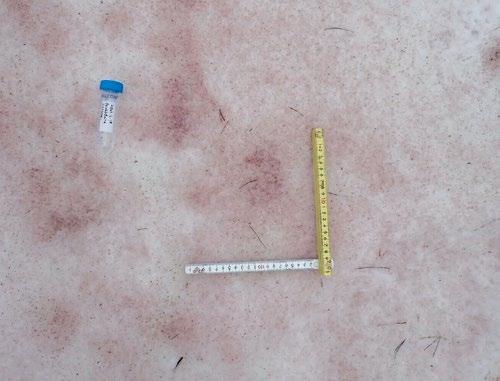
Kagami’s interest in microorganisms began when she was a child after watching the movie Nausicaa, a post-apocalyptic anime fantasy about the quest for environmental harmony amidst war and ecological threats. “I was amazed to learn that microorganisms can purify soil and water,” she says. “At the time, Japan was highly polluted and in Tokyo, where I lived, the water was very dirty. I thought it would be great if we could do something about this using the power of microorganisms.”
Kagami is currently researching chytrids that parasitise algae found in snow and glaciers.
Snow algae give a green or red colour to snow and glaciers, which cause the accelerating of global warming. “Normally, sunlight reflects off white snow or glaciers, providing a cooling effect. But snow algae reduce the snows reflection ability and hinder this cooling effect,” she explains. “We are investigating chytrids’ ability to effectively kill snow algae, which are increasing due to global warming. If chytrids can kill them, it may be possible to help slow down global warming.”
Additionally, Kagami is investigating marine snow — a phenomenon in which plankton and other organic materials sink to the ocean floor like snow. Kagami is looking to find out if chytrids could cause more marine snow to form, which can increase carbon storage in the ocean as plankton absorbs carbon dioxide and takes it down to the ocean floor as marine snow.
“We are working on real snow, marine snow, and lake snow, so we’re like snowmen!” exclaims Kagami.
“The chytrid is not often covered by the media, but it has great potential,” she adds. “Microorganisms are invisible but have amazing powers. I want to bring this to the forefront and connect it to further applications of basic research.”


STORY CONTINUED YOKOHAMA NATIONAL UNIVERSITY
Maiko Kagami
Snow algae give a red or green colour to snow and glaciers, accelerating global warming.
Kagami and team on field work
In the cycle known as "Mycoloop", single-cell algae diatoms (above) are decomposed by parasitic fungi chytrids, which are then eaten by small crustaceans daphnia (upper right).
Yokohama National University 43 ASIA RESEARCH NEWS 2024 Further information
Prof Maiko Kagami
| kagami-maiko-bd@ynu.ac.jp
Minimising storm damage
Xiang Chunyi, another researcher at the IMS, is a visiting Associate Professor from China who works at the institute’s Typhoon Science and Technology Research Centre. Xiang says her experiences growing up with natural disasters in the Yangtze River basin, especially floods, are behind her drive to help prevent regional disasters by improving the precision of typhoon forecasting.
Through her research involving typhoon forecasting technology, Xiang hopes to bridge the gap between natural science and applied science.
“My research focuses on understanding how the ocean's response to typhoon landfall influences the intensity and structure of typhoons,” she says. Landfall is the critical moment when a tropical cyclone reaches the

coastline, posing significant risks, such as strong winds, heavy rainfall, and flooding. “My focus is on the disastrous impact of typhoons and the typhoon landing process.”
“The goal of my research is to enhance the precision of typhoon forecasts and minimise losses from weather disasters,” she says. “At IMS, you can examine Japan's comprehensive disaster prevention strategies and response measures for coping with natural disasters.”
“The IMS brings together a group of highly innovative scientists,” she continues, pointing out the diversity and collaborative spirit at the institute. “During my time here, I have been deeply impressed by the research atmosphere and overall environment.”

In April 2023, the IMS was established as a vision-driven research institute aiming to create an ideal future society through interdisciplinary collaboration using cutting-edge technology. Research projects are selected through a back-casting method where researchers set a future objective and then work backwards from that point, tracing the steps needed to achieve it. There are four research centres at the IMS: the Creation of Symbiosis Society with Risk Centre, Typhoon Science and Technology Research Centre, Sustainability Resilience and Well-being Centre, and the Next-Generation Health Technology Centre. It also has three research units specialised in Biosphere, Artificial Intelligence for Innovation and Co-Creation, and Co-innovation Dynamics.
Assoc Prof Xiang Chunyi | xiangcy@cma.gov.cn Yokohama National University YOKOHAMA NATIONAL UNIVERSITY
Xiang Chunyi
STORY CONTINUED 44 ASIA RESEARCH NEWS 2024 Further information
Combating cybercrime
Over at the IAS, Yin Minn PaPa, an Associate Professor who specialises in AI security and cyber threat intelligence is working on creating a safer global cyber community. Originally from Myanmar, she completed her master’s and doctorate at YNU, and later worked in industry before returning to YNU in 2022.
Yin Minn’s interest in the cybersecurity was sparked following a cyber-attack at work in her home country. “Through my research, I aim to develop innovative strategies to combat evolving threats, empowering organisations and societies to navigate the digital landscape safely,” she says.
“In our research, we monitor cybercrime activities and the sale of information leaked by cybercriminals, like credit card information, as well as the sale of illicit drugs or malicious services such as malware,” she explains. “We also monitor cyberattack tools and hacked systems, as well as fraudulent activities on social networking services and other
platforms to better understand cybercriminal strategies.”
“We have recently been exploring cyberthreats originating from new technologies like generative AI and how it can potentially be misused to create computer viruses. “We confirmed that, under the safety controls of recent AI systems, it is possible to generate functional malware and attack tools within 90 minutes.
Our study underscores the necessity of enhancing the safety controls of AI systems, particularly concerning the increasing occurrences of jailbreak prompts, inputs to an AI system that can bypass the safety controls,” says Yin Minn. “Additionally, we closely track instances where cybercriminals abuse Smart Contracts, a program running on the blockchain, to perform cryptocurrency and NFT (non-fungible token) scams. These studies aim to comprehend the attackers' methods, ultimately bolstering defence and prevention strategies through the insights gained.”
Cybersecurity goes beyond national borders. Yin Minn stresses the importance of international collaboration to enrich the depth and breadth of research and open doors to unique databases.“ We have established research collaborations with the Netherlands, USA, Germany, and France.”
Highlighting the institute’s dedication to empowering and supporting female researchers, Yin Minn notes, “I’ve observed that IAS actively fosters diversity, particularly for individuals like me — a woman and a foreigner in the cybersecurity field — from underrepresented backgrounds.”
As the IAS and IMS envision their transformation into global research hubs, it is anticipated that collaborations with exceptional foreign researchers like Kagami, Chunyi, and Yin Minn will continually enhance research capabilities and bring them closer to their goal of shaping a brighter and more inclusive future.


The IAS was launched in October 2014 to effectively address modern-day challenges and contribute to the formation of a safer, more sustainable global community. With a special research focus on safety engineering and risk, the IAS takes advantage of YNU's extensive expertise in this field, aiming for an impactful societal transformation. The IAS hosts two research centres — the Quantum Information Research Centre and the Advanced Chemical Energy Research Centre — alongside four research units specialised in Information and Physical Security, Cell-based Bioassay, High Efficiency Electrical Energy Conversion, and Unconventional Magnonics.

Assoc Prof Yin Minn PaPa | yinminn-papa-jp@ynu.ac.jp Yokohama National University YOKOHAMA NATIONAL UNIVERSITY
STORY CONTINUED 45 ASIA RESEARCH NEWS 2024 Further information

ALTERNATIVE FUELS BIOCHEMIST
Julian Arca Banzon (25 March 1908 - 13 September 1988) was a biochemist from the Philippines who was a pioneer in alternative fuel research, investigating the use of indigenous crops as sources of renewable fuels and chemicals. He researched the production of ethyl ester biofuels from sugarcane and coconuts and developed new methods for extracting oil from coconuts using chemicals. His research contributed to the growth of the food, chemical commodities, and biofuel industries. He was also the first director of the Philippine Atomic Research Center (now the Philippine Nuclear Research Institute) and served as the chairman of the division of chemical and pharmaceutical science of the National Research Council of the Philippines from 1972 to 1973.
THE ENGINEER WHO RESEARCHED MICROWAVES
Rajeshwari Chatterjee (24 January 1922 – 3 September 2010) was the first female engineer from Karnataka in India. She earned a master’s degree and doctoral degree from the University of Michigan on a scholarship awarded by the Delhi government. When she returned to India, she became a faculty member at the Indian Institute of Science’s Department of Electrical Communication Engineering. She and her husband eventually set up the first microwave engineering research laboratory in the country. Her contributions to microwave research and antennae engineering are used in the field of radar and aircraft and spacecraft applications. After retiring from research, she worked with social programs to address issues on caste segregation, gender discrimination and poverty.



THE DOCTOR WHO CHAMPIONED WILDLIFE PROTECTION
Boonsong Lekagul (15 December 1907 – 9 February 1992) was a physician and conservationist who made major contributions to the preservation of Thailand’s wildlife. He founded organisations such as the Association for the Conservation of Wildlife (ACW), wrote about Thailand’s natural heritage, and supported conservation initiatives. He and the ACW lobbied for a bird sanctuary to protect the country’s only known openbill stork nesting site. In 1962, he founded the Bangkok Bird Club, now known as the Bird Conservation Society of Thailand, and worked closely with the International Council for Bird Preservation, now BirdLife International, and the World Wildlife Fund. He also published conservation news in English and Thai and created educational pamphlets for school children. Several animals have been named after him, including two species of birds.
GIANTS IN HISTORY
46 ASIA RESEARCH NEWS 2024 Discover more GIANTS IN HISTORY SCAN OR CLICK

Behind
breakthrough It's time for Asia Research News to tell yours. there is a story. THE RESEARCH COMMUNICATION EXPERTS HOW WE TELL YOUR RESEARCH STORY
every
SHIELDING BEYOND VACCINES
Vaccines and therapies based on messenger RNA could be more readily delivered due to a non-toxic polymer that protects RNA and controls its release inside cells.

The advent of vaccines using messenger RNA (mRNA) to direct immunogenic protein synthesis, best-known in vaccines against COVID-19, is stimulating researchers to find better ways to keep the mRNA stable and deliver it effectively. A team at the University of Tokyo, with collaborators in Japan and China, has now developed polymers that can interact with, stabilise, and encase mRNA, allowing highly effective delivery into cultured human cells and cells of live mice. They have published their work in the journal Science and Technology of Advanced Materials.
“Beyond vaccines for infectious diseases, mRNA presents promising avenues for unprecedented treatments like protein replacement therapies, gene editing, and immunotherapies,” says Horacio Cabral of the University of Tokyo team. “But to unlock the full potential of these advanced therapies, the development of safe and effective carrier systems is paramount.”
The researchers investigated ways to fine-tune the structure of their polymer molecules to allow them to interact with mRNA to protect it. The biocompatible and non-toxic polymers were of a type called block-copolymers, built from alternating segments of different chemical groups, in this case polyethylene glycol and polyglycerol. But the key to achieving appropriate interaction with mRNA was to attach specific positively charged amino acid groups to the long polymer backbone. The positive charge
generally attracts the polymer to negatively charged RNA, and the chosen amino acids were also able to interact with parts of the mRNA in a process called pi-pi (π–π) stacking. This involves interactions between electrons in a feature called pi bonds in cyclic molecular rings stacked side by side in the interacting molecules.
“This is a highly customisable approach, allowing fine-tuning of our polymer’s interactions with mRNA,” says Cabral. As a result, the mRNA was stabilised highly effectively, overcoming a major drawback of instability found with alternative approaches.
The polymer and mRNA spontaneously assembled into spherical bundles – micelles – that effectively delivered the mRNA cargo into cultured cells and also into mouse cells after intramuscular injection. The mRNA was readily released inside cells to generate the proteins it encoded at high efficiency, and for a significantly longer time than alternative approaches.
“This work was very challenging due to the delicate nature of mRNA, a highly fragile molecule that needs protection outside target cells but immediate exposure to the cell machinery once inside,” says Cabral. He adds: “Our success is exciting due to its potential to transform mRNA delivery technologies, allowing precise engineering, innovative release strategies, and overcoming critical barriers to enhance stability and efficacy in mRNA-based therapies.”
NATIONAL INSTITUTE FOR MATERIALS SCIENCE Further information Prof Horacio Cabral | horacio@bmw.t.u-tokyo.ac.jp The University of Tokyo Dr Yasufumi Nakamichi | nakamichi.yasufumi@nims.go.jp Science and Technology of Advanced Materials (STAM)
48 ASIA RESEARCH NEWS 2024
CRACKING THE METAL CODE
A new method allows scientists to gather enough information about the properties of metals to enable the prediction of the properties of new materials.
A new approach uses data from one type of test on small metal alloy samples to extract enough information for building databases that can be used to predict the properties and potentials of new materials. The details were published in the journal Science and Technology of Advanced Materials: Methods
The test is called instrumented indentation. It involves driving an indenter tip into a material to probe some of its properties, such as hardness and elastic stiffness. Scientists have been using the data extracted from instrumented indentation to estimate the stress-strain curve of materials using computational simulations. This curve, and the data it provides, is important for understanding a material’s properties. That data is also used for building massive materials databases, which can be used, in conjunction with artificial intelligence, for predicting new materials.
A problem scientists face is that this approach for estimating material properties is limited when it comes to materials called high work-hardening alloys: metal alloys, like steel, that are strengthened through physical processes like rolling and forging. Only so much information can be estimated from the curve of these materials. To get the additional information needed to determine their properties, more experiments would need to be done, which costs time, effort, and money.
Ta-Te Chen of the University of Tsukuba and Ikumu Watanabe of the National Institute for Materials Science (NIMS) in Japan have developed a new computational approach to extract that additional information from instrumented
Dr
Science
indentation tests on work-hardening alloys.
“Our approach builds on an alreadyexisting model, making it ready for use in industry. It is also applicable to existing data, including hardness,” says Watanabe.
The approach involves combining the results from two computational models, the power-law and linear hardening models, which produce their own individual stress-plastic strain curves from

information gathered from indentation tests. Combining the data from both curves provides the extra data that, when added to the original stress-strain curve, shows a more holistic picture of the work-hardening alloys’ properties.
The scientists validated their approach by using it on a high work-hardening stainless steel.
“We have extended this approach to also evaluate mechanical properties at elevated temperatures, which can contribute to the development of hightemperature alloys,” says Chen.

The scientists used computer simulations to build a database of material properties.
Dr Ikumu Watanabe | watanabe.ikumu@nims.go.jp National Institute for Materials Science
NATIONAL INSTITUTE FOR MATERIALS SCIENCE
Nakamichi | nakamichi.yasufumi@nims.go.jp
Yasufumi
and Technology of Advanced Materials: Methods (STAM-M)
49 ASIA RESEARCH NEWS 2024 Further information
Credit: Ikumu Watanabe, et al. Science and Technology of Advanced Materials: Methods. October 17, 2022
GENERATING 3D GEOMETRIES
A trained AI system learns to design cellular materials with specific target properties for a wide range of potential uses, including tissue engineering and energy storage.

Artificial structures called cellular materials have a network of internal spaces within a solid cell-like matrix. Their porous foamlike architecture combines advantages of low density with strength. Researchers at the National Institute for Materials Science (NIMS) and the University of Tsukuba in Japan have applied a form of generative artificial intelligence (AI) to develop a new and improved approach for designing cellular ma terials with precisely targeted porosity and stiffness. Their work is published in the journal Science and Technology of Advanced Materials
“Unlike conventional approaches, our method does not rely on a designer’s experience,” says computational researcher Xiaoyang Zheng, first author of the research article. “We call it an inverse approach, because instead of initially pro posing a design and then testing it, the sys tem explores designs from a low-dimension feature space (i.e., latent space) and automatically generates a design with desired properties.” The research was supervised by Ikumu Watanabe at NIMS.
implants with a specific desired porosity, stiffness, and elasticity.
The computerised design process begins with a 3D geometric structure composed of discrete elements called voxels. A trained generative AI system, called a conditional generative adversarial

“Although we had earlier developed a similar 2D system, expanding it into 3D was challenging due to the massive computational effort required,” says Zheng. “Generating such 3D geometry designs is at the forefront of the state-of-the-art, not only in materials science but also AI research in general.”

These 3D geometry designs are at the forefront of materials and AI research.
There are many possible applications, but the authors highlight the potential for using their method to design bone
network, is then used to generate the design of a 3D lattice with targeted properties. Real 3D materials corresponding to the suggested design are then constructed and tested experimentally, using 3D printed resins. Their behaviour was also investigated using computer simulations.
In addition to the suggested use for making bone implants, the researchers point to potential advances in the wide range of applications in which cellular materials are currently used and also considered for future development. These include materials for soft robotics, soft electronics and switches, and electrochemical energy storage and conversion.
“The great feature of the approach is the diversity of solutions it can provide, generating many possible candidates for many different materials,” Zheng concludes.
Having demonstrated the system’s feasibility and potential, the team now plans to use it to explore a variety of advanced materials. As part of this work, they hope to extend the scope of the AI system so that it can target a wider variety of properties in the materials it designs.
Dr Ikumu Watanabe | watanabe.ikumu@nims.go.jp National Institute for Materials Science Dr Yasufumi Nakamichi | nakamichi.yasufumi@nims.go.jp Science and Technology of Advanced Materials (STAM) NATIONAL INSTITUTE FOR MATERIALS SCIENCE
50 ASIA RESEARCH NEWS 2024 Further information

















 Tailor-made molecules page 08
AI unlocks chemistry page 41
An app for dengue page 09
Algae, typhoons and cybercrime page 42
Diversifying economies page 10
Giants in history page 46
Nano-jab cell responses page 18
Turning up the heat page 20
Giants in history page 40
Machine learning x-ray analysis page 38
Tailor-made molecules page 08
AI unlocks chemistry page 41
An app for dengue page 09
Algae, typhoons and cybercrime page 42
Diversifying economies page 10
Giants in history page 46
Nano-jab cell responses page 18
Turning up the heat page 20
Giants in history page 40
Machine learning x-ray analysis page 38













 Founder and CEO
Magdeline
Founder and CEO
Magdeline




























 Credit:
Credit:














 Credit: Kavli IPMU
Credit: Kavli IPMU














































